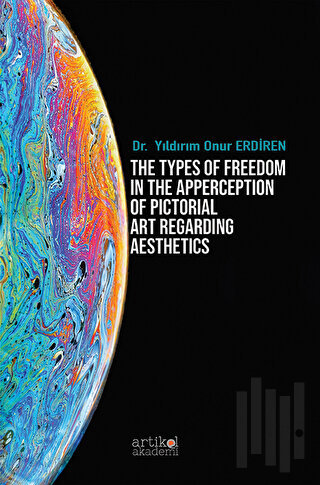
The aim of this study, which examines the forms of freedom in the reception of the art of painting in the context of aesthetics, is to explain the relationship of freedom in art in the context of aesthetics and to exemplify the problematics within which this discussion is evaluated in the art of painting. The conceptual philosophical discussion dimension that has emerged since the formation of aesthetic thought is at the end of the study. The aesthetic subject-object relationship and the aesthetic value-judgment relationship, which are considered as the steps of aesthetic analysis, are explained with a holistic approach in this section. Thus, in this section, two different types of analysis have been tried to be dealt with in relational dimensions from the beginning of the artist’s creative activity to the evaluation of the artwork. The forms of freedom are explained in the context of human, society, politics and art in a philosophical perspective. The titles of being human and freedom, social freedom, political freedom and freedom in art were interpreted and compared in terms of different understandings in the history of philosophy. Again in this section, through the example of the reception of painting as a form of freedom, which epistemological, ontological and ethical dimensions of reception correspond to aesthetically and how the art of painting is received are examined. The relationship between the art of painting and freedom is examined within the framework of contemporary debates and the actors of art. In terms of positioning them as the subjects of art, the extent of the freedom relations mentioned in the figures of the artist, art critic, art lover, educator and statesman has been explained. Finally, the relationship between art, institutionalization and freedom was opened to discussion. Therefore, in this study, to reveal the philosophical dimension of the relationship between the founding and executive elements of art; On the other hand, it aims to contribute to today’s understanding of freedom, especially in the art of painting.
The aim of this study, which examines the forms of freedom in the reception of the art of painting in the context of aesthetics, is to explain the relationship of freedom in art in the context of aesthetics and to exemplify the problematics within which this discussion is evaluated in the art of painting. The conceptual philosophical discussion dimension that has emerged since the formation of aesthetic thought is at the end of the study. The aesthetic subject-object relationship and the aesthetic value-judgment relationship, which are considered as the steps of aesthetic analysis, are explained with a holistic approach in this section. Thus, in this section, two different types of analysis have been tried to be dealt with in relational dimensions from the beginning of the artist’s creative activity to the evaluation of the artwork. The forms of freedom are explained in the context of human, society, politics and art in a philosophical perspective. The titles of being human and freedom, social freedom, political freedom and freedom in art were interpreted and compared in terms of different understandings in the history of philosophy. Again in this section, through the example of the reception of painting as a form of freedom, which epistemological, ontological and ethical dimensions of reception correspond to aesthetically and how the art of painting is received are examined. The relationship between the art of painting and freedom is examined within the framework of contemporary debates and the actors of art. In terms of positioning them as the subjects of art, the extent of the freedom relations mentioned in the figures of the artist, art critic, art lover, educator and statesman has been explained. Finally, the relationship between art, institutionalization and freedom was opened to discussion. Therefore, in this study, to reveal the philosophical dimension of the relationship between the founding and executive elements of art; On the other hand, it aims to contribute to today’s understanding of freedom, especially in the art of painting.
| Taksit Sayısı | Taksit tutarı | Genel Toplam |
|---|---|---|
| Tek Çekim | 196,00 | 196,00 |











